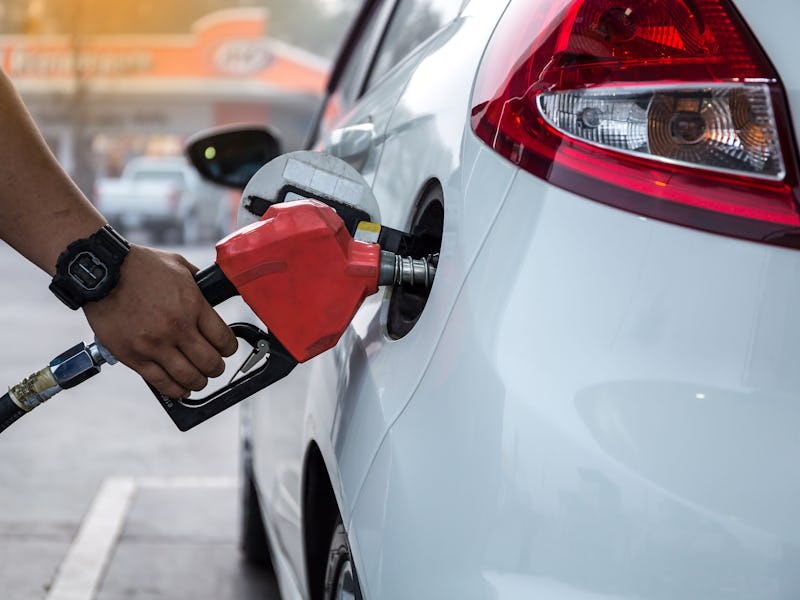Synthetic gas will be as cheap as fossil fuels by 2022, expert says
But better infrastructure will be needed.

Whenever we fill up at the pump or take our seat on an airplane, we add to the carbon emissions cycle created by the transportation industry. Despite knowing its negative effects, the cost and access to alternatives can be prohibitive (Teslas aren't cheap). But with recent innovation in renewable fuel technology, a new report predicts that synthetic gas will become as cheap as fossil fuel by 2022.
The report, published last week in the energy-focused academic journal Joule, focuses on one type of renewable energy creation in particular called direct air capture (DAC), and highlights how this alternative could fit into already existing fuel infrastructure.
While synthetic gas might have been dismissed in the past with the likes of other grand approaches such as solar or soil engineering, the report's author, Rob McGinnis, saya several innovations have come to a head in recent years that make this option more viable than ever.
(McGinnis is founder and CEO of a DAC company called Prometheus.)
"Recent breakthroughs in separations and catalysis, along with long-trend reductions in solar and wind electricity costs, have significantly increased the potential for cost-competitive renewable fuels from direct air capture (DAC) of CO2," writes McGinnis. "This is an important development because there is little time available to reduce CO2 emissions sufficiently to avoid the worst effects of climate change."
DAC comes in several flavors, but the kind McGinnis praises in his report is called CO2 electrolysis and uses electricity and water to breakdown CO2 and transform it into a renewable fuel option called syngas.
McGinnis writes that developments in catalysts used to drive this reaction -- as well as the ability to now complete the reaction at room temperature and atmospheric pressure -- have created opportunities to reduce the overall price of the process as well as to complete it at a smaller, more disperse scale. Additionally, by capturing CO2 in water used for the reaction instead of from a dispersed source like air, McGinnis writes that the process uses less energy than previous approaches.
"These advances together allow for inexpensive systems that can make true gasoline, diesel, and jet fuels from atmospheric CO2," writes McGinnis.
McGinnis writes that these innovations, paired with solar energy, can drive down the cost of electricity to make syngas derived from DAC. It could be cost-competitive with traditional fossil fuels by 2022.
Paired with the fact that syngas could use existing fueling infrastructure (e.g. gas pumps and fuel tanks), McGinnis writes that these alternatives could turn the tide for the transportation industry.
But how much will this actually bring down global emissions?
According to a 2017 EPA report, emissions from transportation alone accounted for 29 percent of total CO2 emissions in the US, with a carbon intensity of nearly 101.5 grams of CO2 per megajoule, according to the company Carbon Engineering.
Synthetic gas created with DAC, on the other hand, has a carbon intensity of roughly 10 grams per megajoule -- a level of magnitude decrease. So, if DAC synthetic gas was to really be embraced and adopted as a standard by the transportation industry, the result could be huge.
However, as McGinnis notes in his report, price reduction alone won't usher in these changes. In addition to lowering the price of these fuels, McGinnis writes that improving the infrastructure of renewable electricity sources, like solar farms, will be essential to enable the scaling of this approach.
Without reliable, cheap electricity, the other technological advances of this synthetic fuel technology will be moot. To remedy this, McGinnis suggests improving transmission line connections between remote solar farms and central fuel generation depots.
"These costs must be kept low enough to be compatible with the competitiveness of the renewable fuels, writes McGinnis. "In order to scale quickly enough to the magnitude necessary for addressing the climate crisis, this challenge must be addressed simultaneously with the challenges of technology scale-up and deployment."